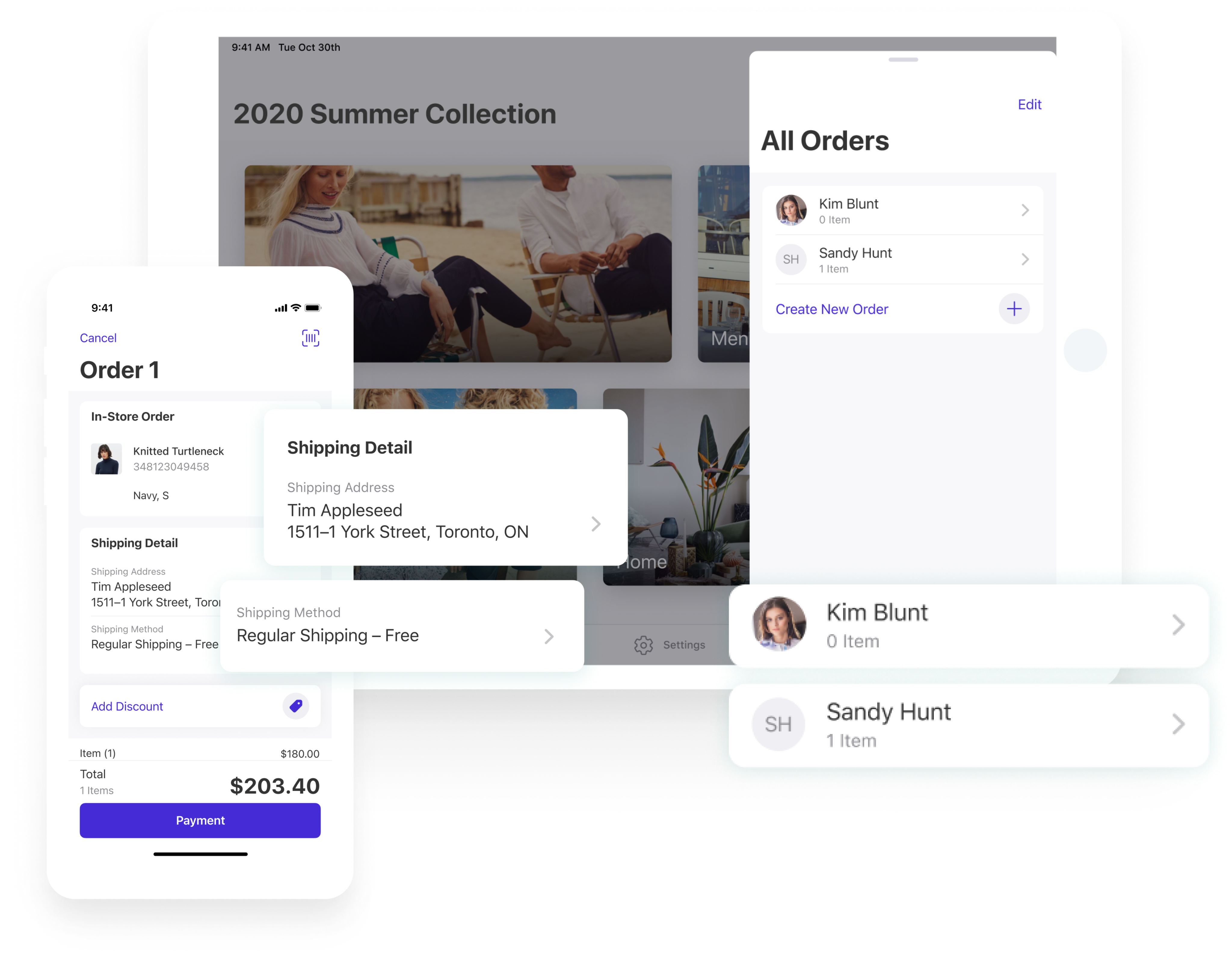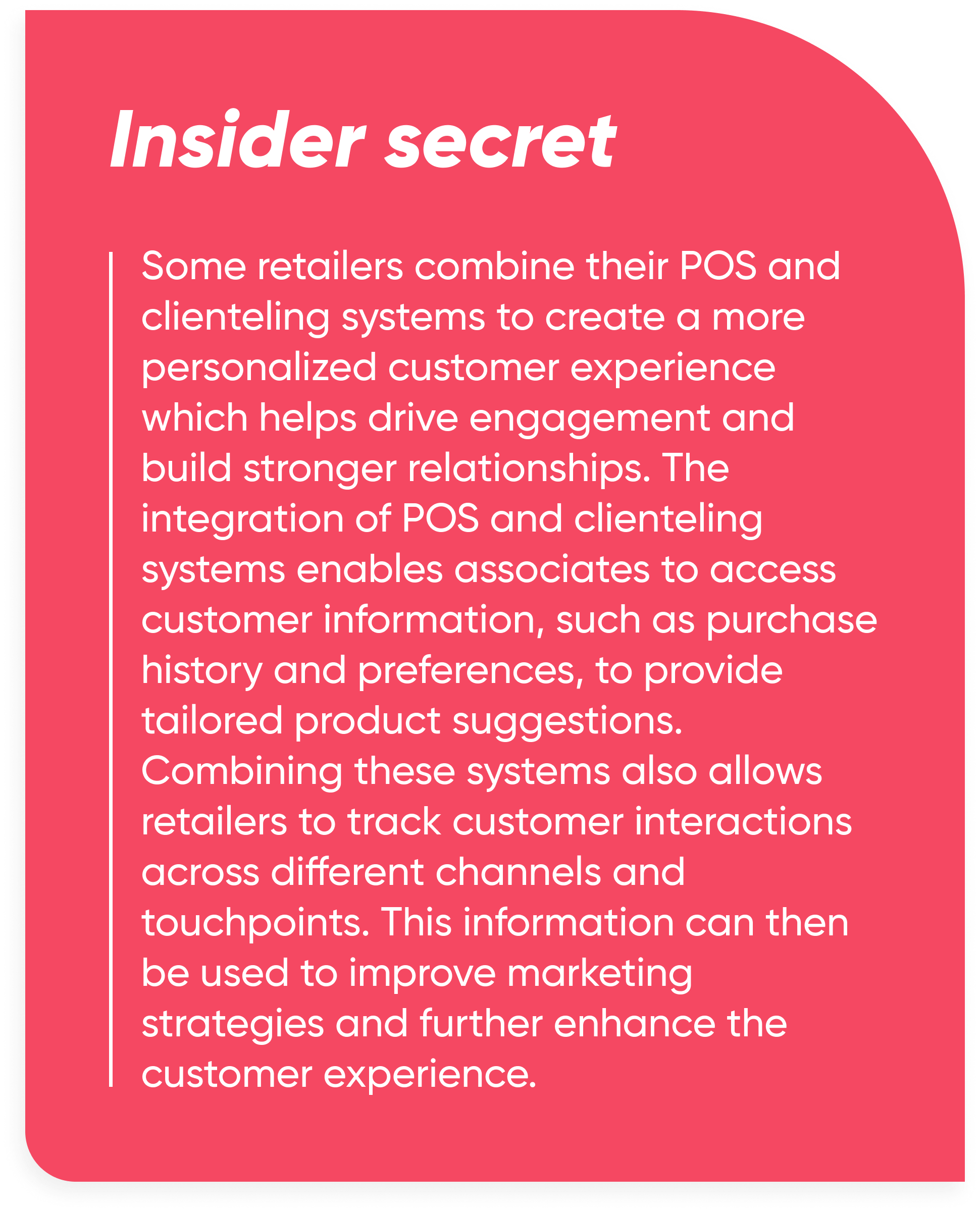
The ultimate guide to buying a retail POS
Choosing the point of sale with the functionality that's right for your business

Navigating the current retail landscape

The role of the store has evolved and brick-and-mortar is more crucial than ever
But what does that actually mean for retailers? Simply put, having a retail footprint is not enough. Stores today need to be equipped as omnichannel experience hubs in order to keep up with the expectations of today’s knowledgeable and tech-savvy consumer.
Meeting customer expectations will look differently for every retailer. Evaluating which choices are best for your business is the key to success in the current retail landscape.
Understanding your business needs
The point of sale system is the heart of retail operations. But, before choosing a POS or even a vendor, you need to really look at what your business needs.
Conducting a detailed analysis of the complexity of your retail business helps to identify the specific features and functions required for seamless operations. What is your future growth potential? Average store size? Who are your customers and how are they shopping? What are your current business challenges?
However, the most important factor is determining what your current differentiators are from your competitors, how your POS will allow you to support those differentiators, and how it will adapt to new ideas that will allow you to continue to differentiate in the future.
Understanding where you are and what your customers want will be instrumental in determining where you need to be and what you need to get there.


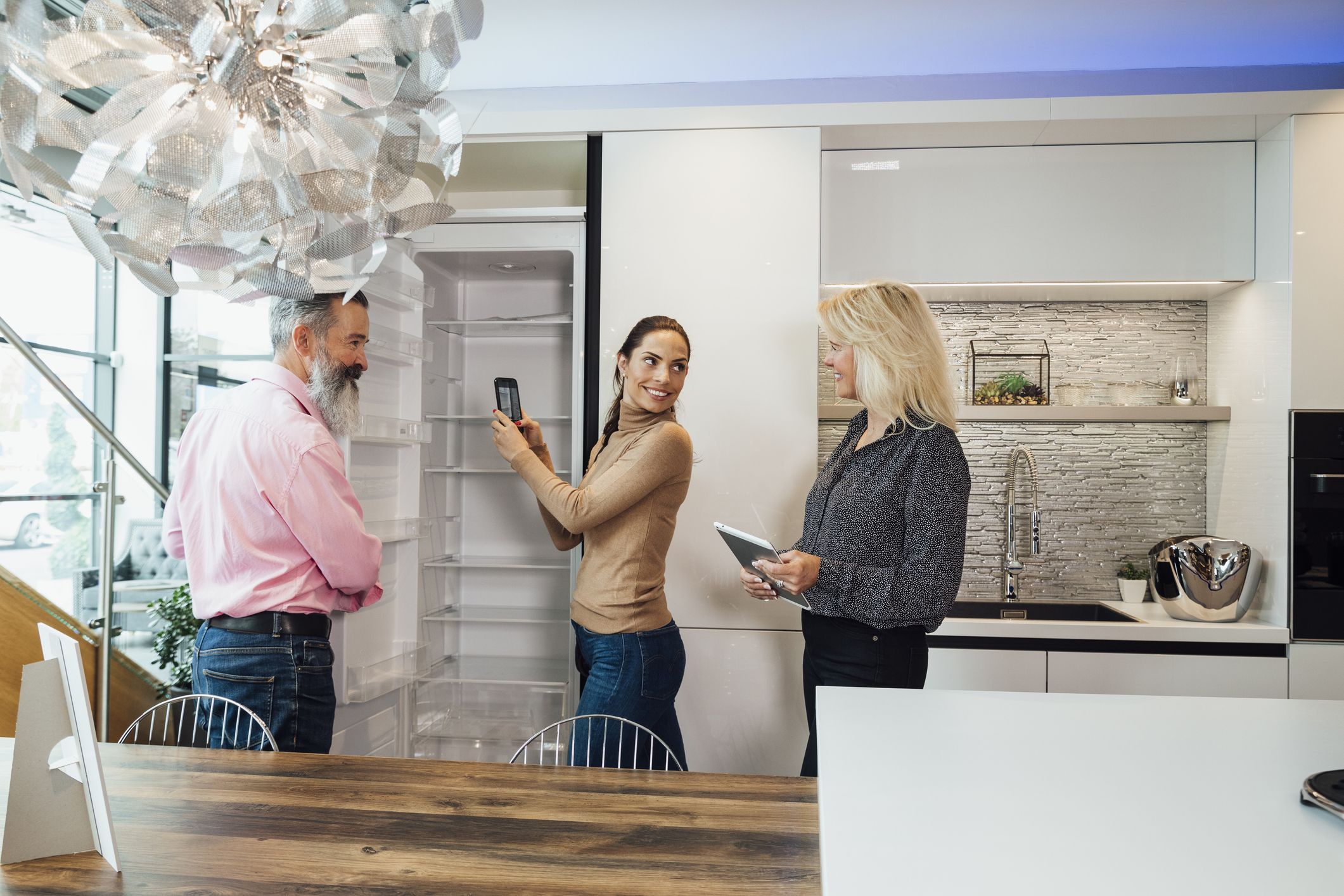
Choosing the right retail POS system

When conceptualizing your business needs, it is important to remember that they are variable. Sometimes you can forecast them—like predicting holiday spending spikes— while other times they come out of the blue— like a pandemic forcing you to close your doors. Your POS should be able to support your business no matter what might come up.
In this way, you can think of your POS like a table with four legs: omnichannel, cloud, enterprise, and intuitive. Think of your business needs as items stacked on the table. In order to efficiently support your business needs, each legs needs to be solid and anchored to the others. If one leg is wobbly, or poorly secured to the table, the entire thing will come crashing down. Only when these foundations are secure, and working concurrently together, will the needs of the business be supported.

The four foundations of a successful POS system
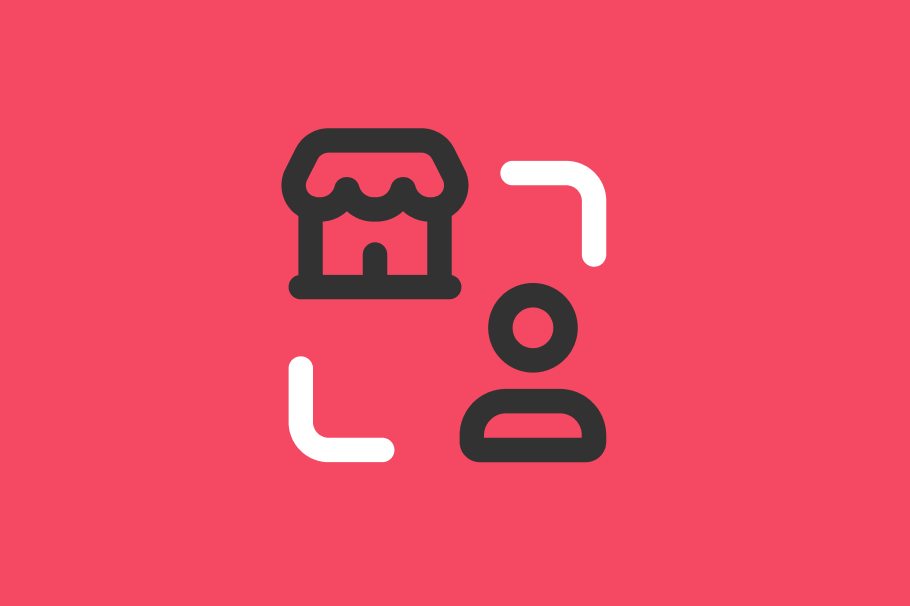
Omnichannel
True omnichannel retail requires modern POS systems for a seamless customer experience.
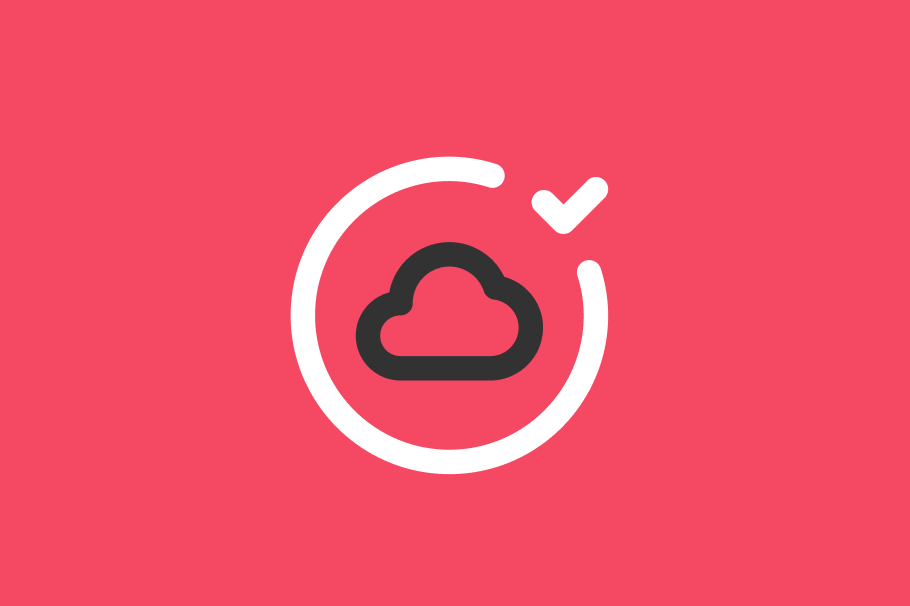
Cloud
Cloud-based POS systems offer retailers a competitive edge in the ever-evolving industry.

Enterprise
Enterprise-scale retailers face unique challenges that require next-gen POS solutions.

Intuitive
An intuitive and appealing UI is crucial for creating an immersive and satisfying in-store experience.
Omnichannel

Mastering the omnichannel experience
It’s easy for retailers to claim to be omnichannel, after all, they have an online store and retail footprint. But truly being omnichannel requires many moving parts and can be challenging to implement.
The modern day shopping experience is extremely fluid. Customers move seamlessly across channels— including in-store, online, and on mobile devices— and truly omnichannel retailers ensure they are equipped to handle any combination of the above. Enabling a fluid journey actually starts and ends with the POS.
Trying to support an omnichannel customer journey with POS terminals that are 30+ years old is challenging if not impossible, seeing that the software was written when “online shopping” was done with a telephone and physical catalog. Leading retailers are equipping their stores with next-gen POS systems, like mobile POS (mPOS) to name just one, that help facilitate a channelless experience.
But, before selecting an omnichannel POS, it’s important to know what you’re looking for based on what you need for your stores. The 5 most popular functionalities to consider are: Orders and returns, product catalog, store fulfillment, and customer data.
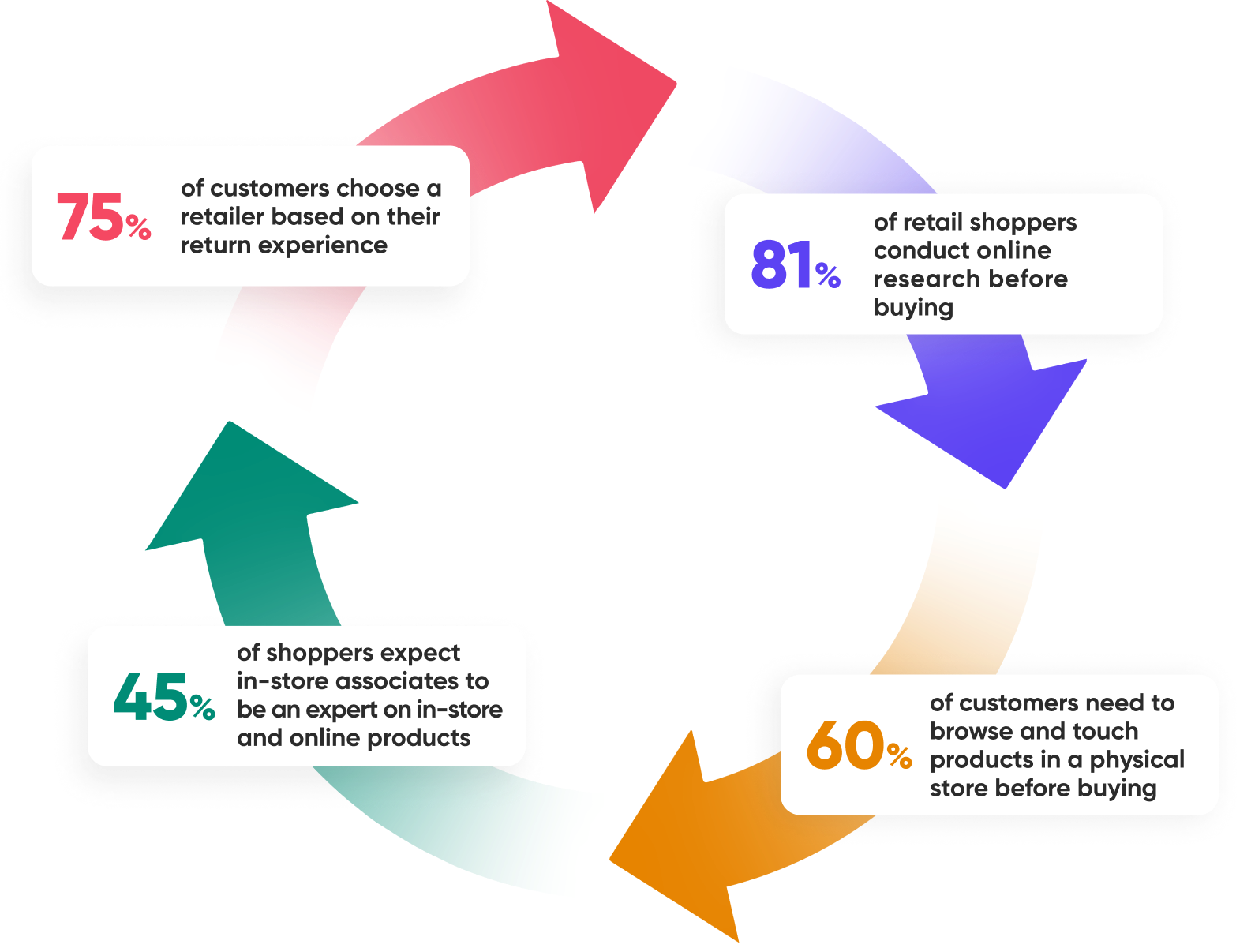
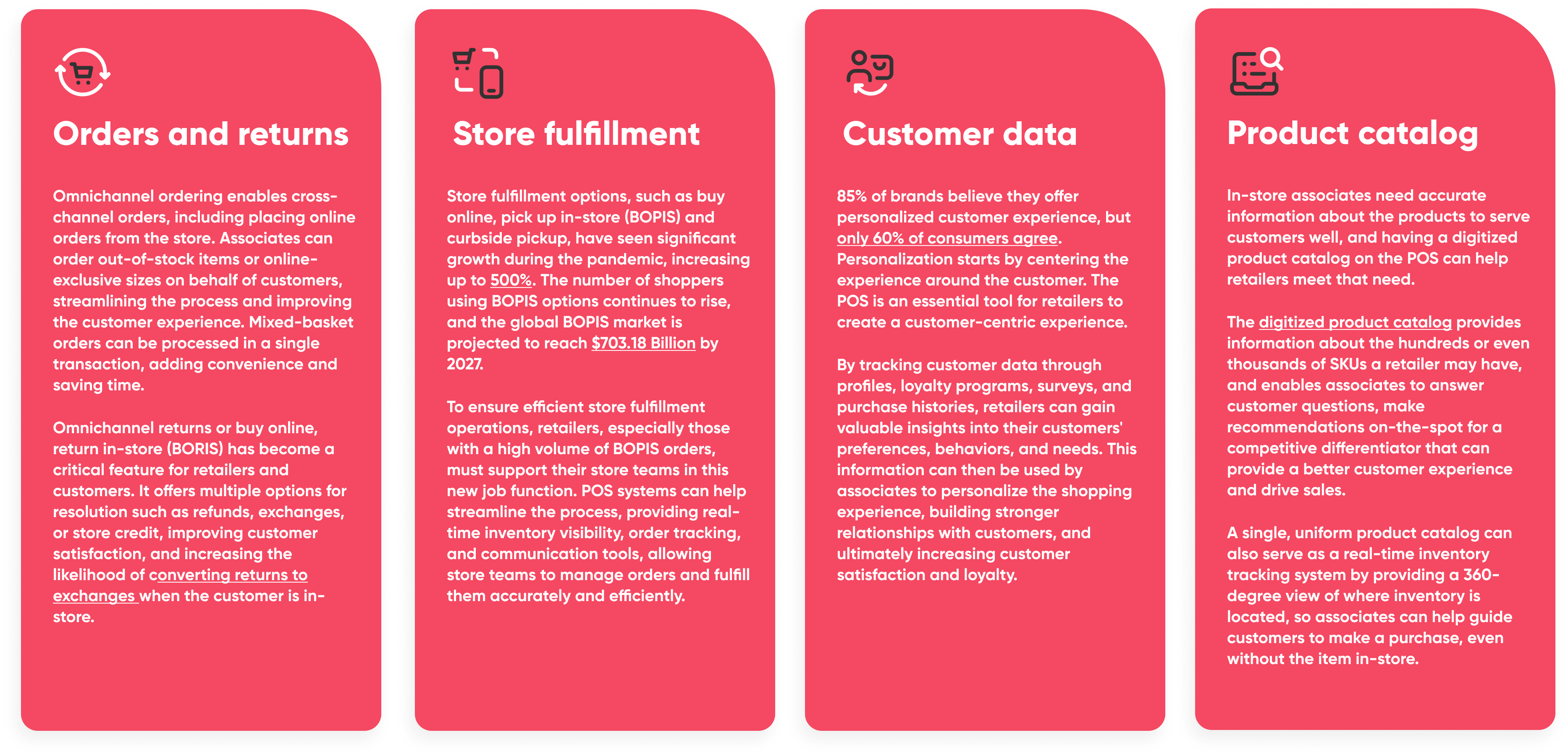
Cloud

Cloud-based POS systems: The future of retail technology
Mobile-first and cloud-based have become popular buzzwords in the tech industry. However, the terms are far from just being drivel, as usage of the concepts are taking off in the retail sector.
In 2020, the global cloud POS market size was valued at $2.24B, and is projected to reach $13.24B by 2028, registering a CAGR of 24.5 % from 2020 to then.
This projected pattern of growth indicates a clear trend of increasing adoption of cloud-based POS systems among retailers over the past three years, as more businesses recognize the benefits of these systems over traditional, on-premise solutions which include: A competitive edge in the ever-evolving market, rapid feature rollouts and scalable growth, cost effective data storage, and anytime, anywhere access to data and reporting.

"Retailers can take several steps to upgrade their tech foundation and speed the development of new solutions. They should pilot a cloud-based, highly automated development platform with built-in security and development tools."
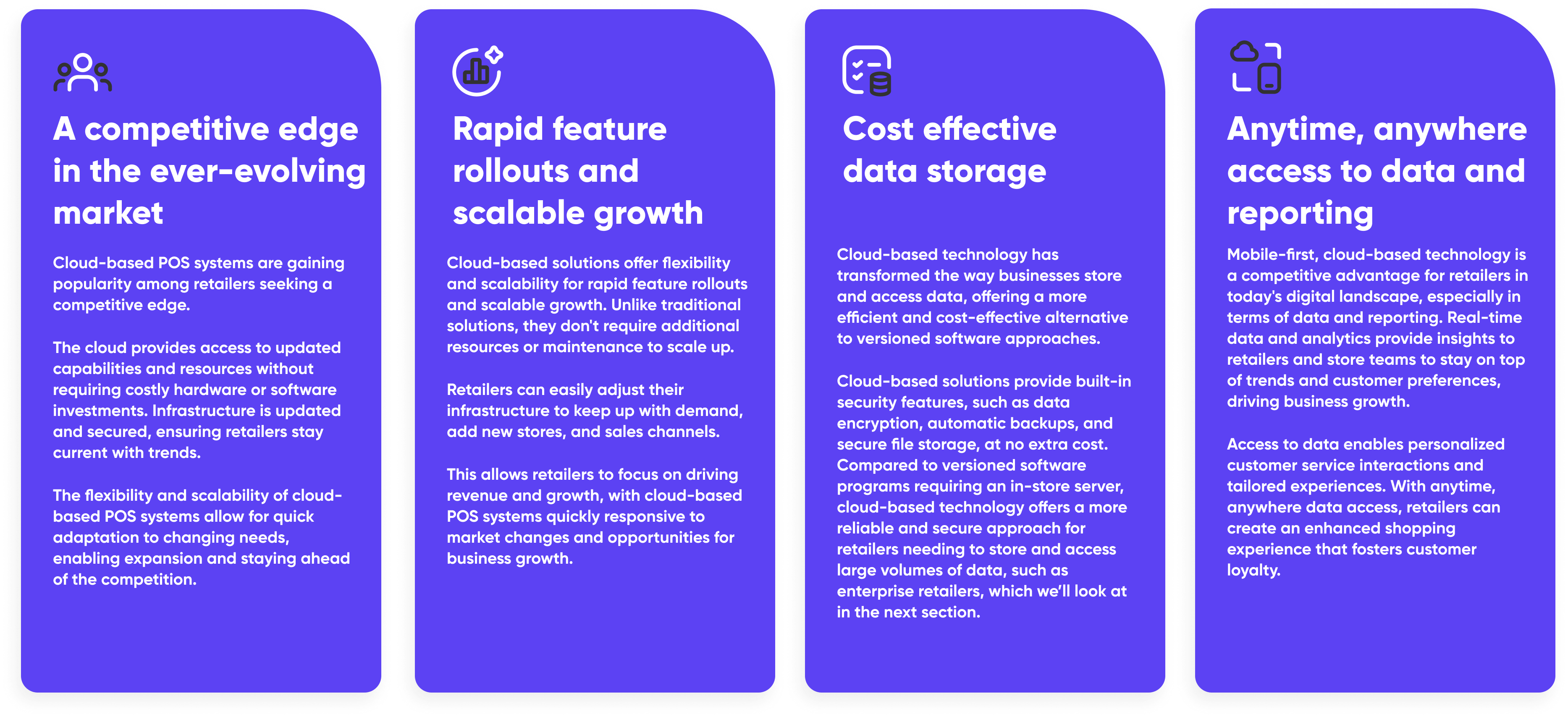
Enterprise

Overcoming the complexities of large-scale retail
Retailers with a large number of stores and millions of SKUs experience complications that smaller brands don’t face.
They need to support multiple locations, leverage large datasets, and maintain compliance with various regulations. This requires more than the typical software solution.
To effectively meet the needs of the business, retailers should consider solutions that offer unified visibility across all stores and departments, integrated tools for managing multiple corporate entities, advanced analytics and reporting, compliance functions, granular permissions for roles and users, and security.
Integrate seamlessly
Enterprise-level POS systems need to integrate seamlessly with existing platforms and systems. Integration eliminates manual data entry, saves time, and minimizes costly mistakes.
Retailers gain a comprehensive view of their operations, make informed decisions based on real-time data, and offer personalized shopping experiences. Integrating systems leads to greater efficiency, accuracy, and flexibility, ultimately increasing the success and profitability of a retail business.
Support multiple locations
An enterprise-scale POS system provides centralized data for retailers with stores on a global or nation-wide scale. It allows for efficient tracking and reporting of sales performance, inventory, employee scheduling, and payment processing.
It can also serve as an integrated platform for marketing initiatives such as pricing, promotions, and loyalty programs. The POS system ensures operations are organized and efficient, providing customers with a seamless shopping experience across all locations.
Leverage large datasets
Every business knows that data is priceless, but only if it’s accurate. An enterprise-scale POS system provides real-time accurate data to track sales, inventory, pricing, and customer profiles.
Retailers can use this data to gain insights into customer behavior, trends, and loyalty, tailor promotions, customize marketing campaigns, and optimize operations to increase customer satisfaction and drive sales.
Ensure regulatory compliance
An enterprise-level POS system can be compliant with various regulations and standards in different ways.
Payment Card Industry Data Security Standard (PCI DSS), Service Organization Control (SOC) 2, and compliance with local and federal regulations, such as tax laws and data privacy regulations are just a few aspects of compliance to consider when choosing a point of sale. By doing so, retailers can solidify their business reputation and avoid costly penalties.
Offer security
In the current digital age, data security has become a top priority for businesses and consumers alike. As it relates to checkout and the POS, 60% of consumers want to be sure retailers are storing their data securely.
Retailers must provide secure access controls, update software regularly, and use data encryption to protect sensitive information from external threats to meet consumer expectations and gain their trust.
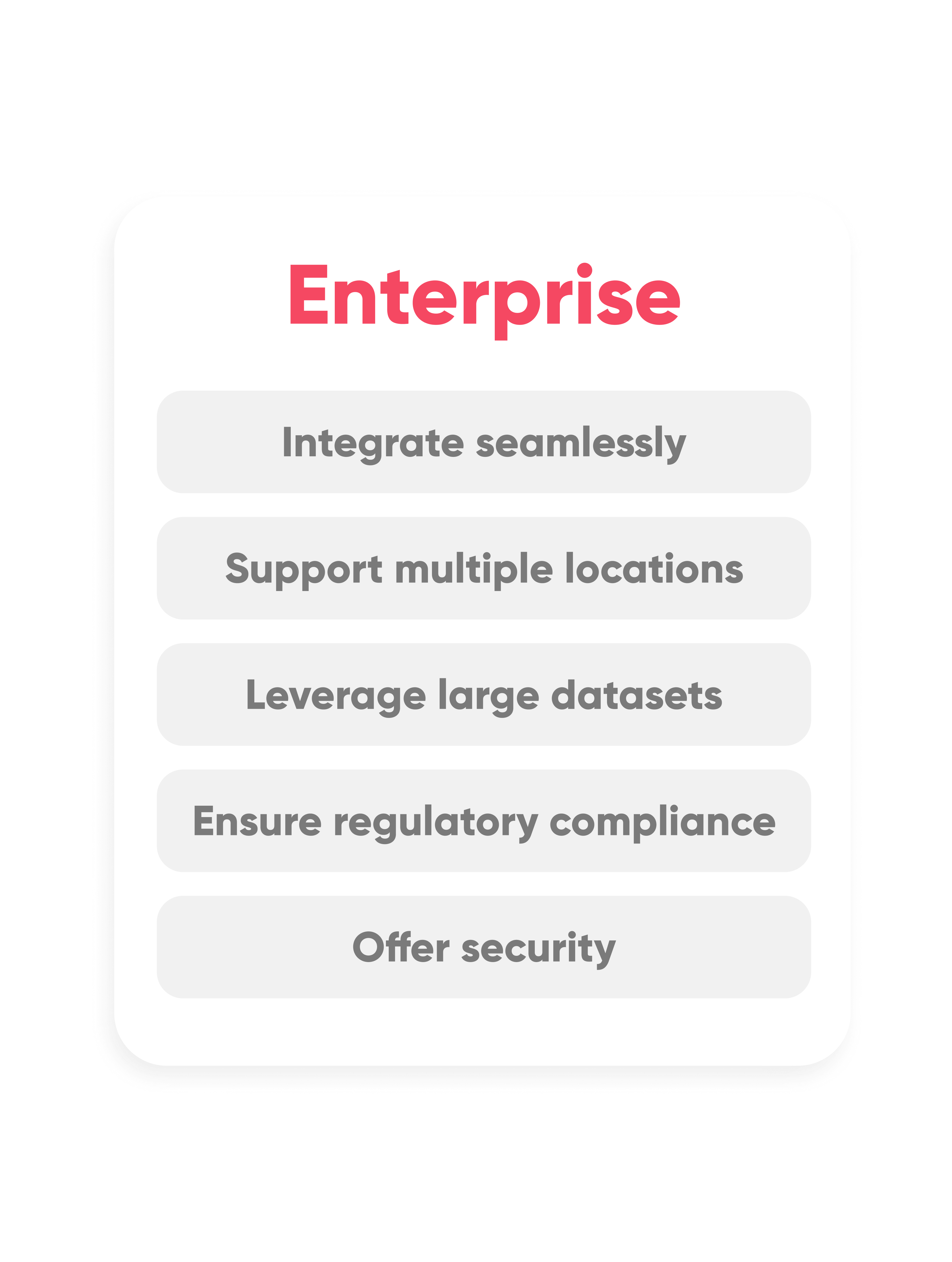
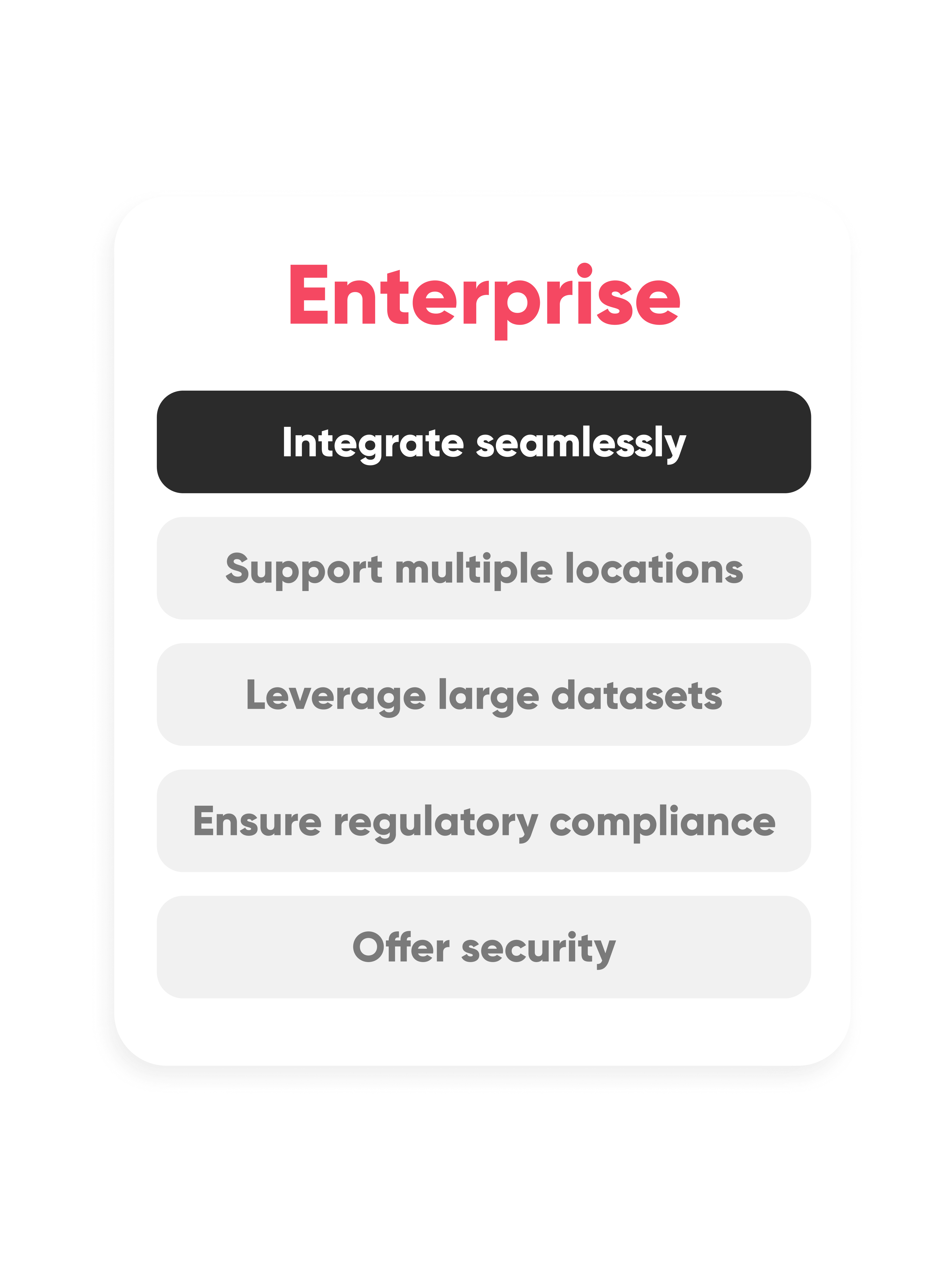
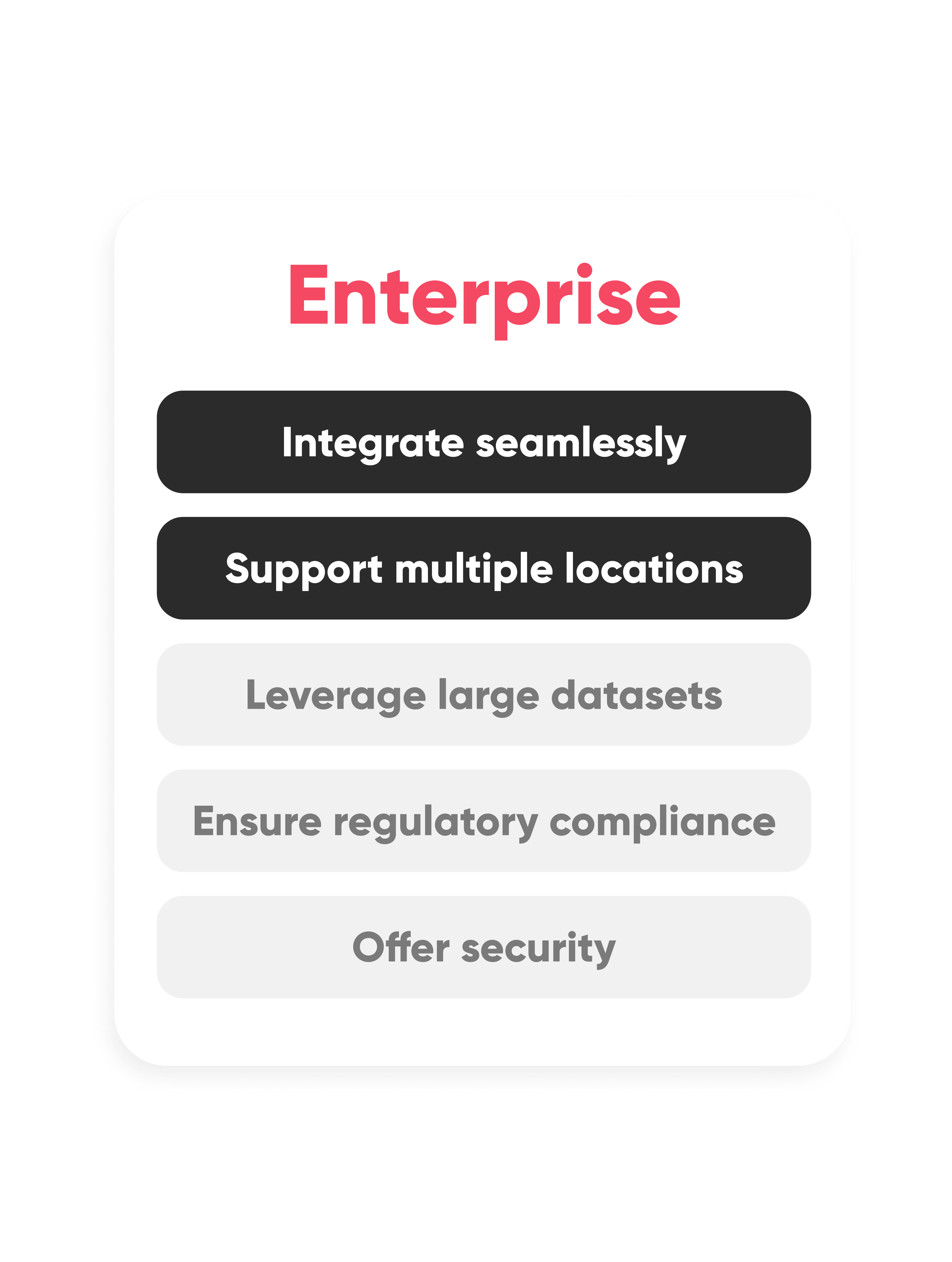
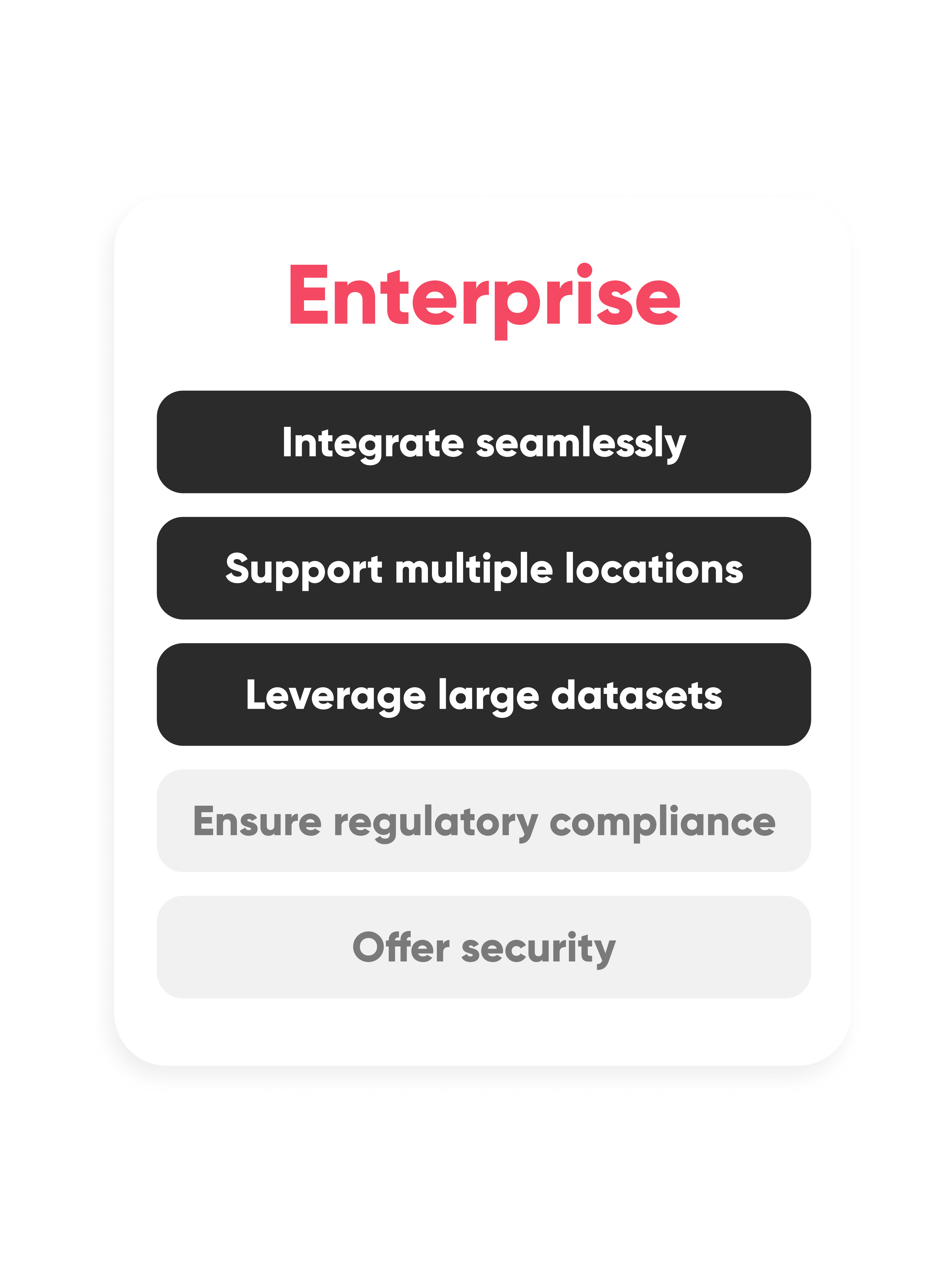

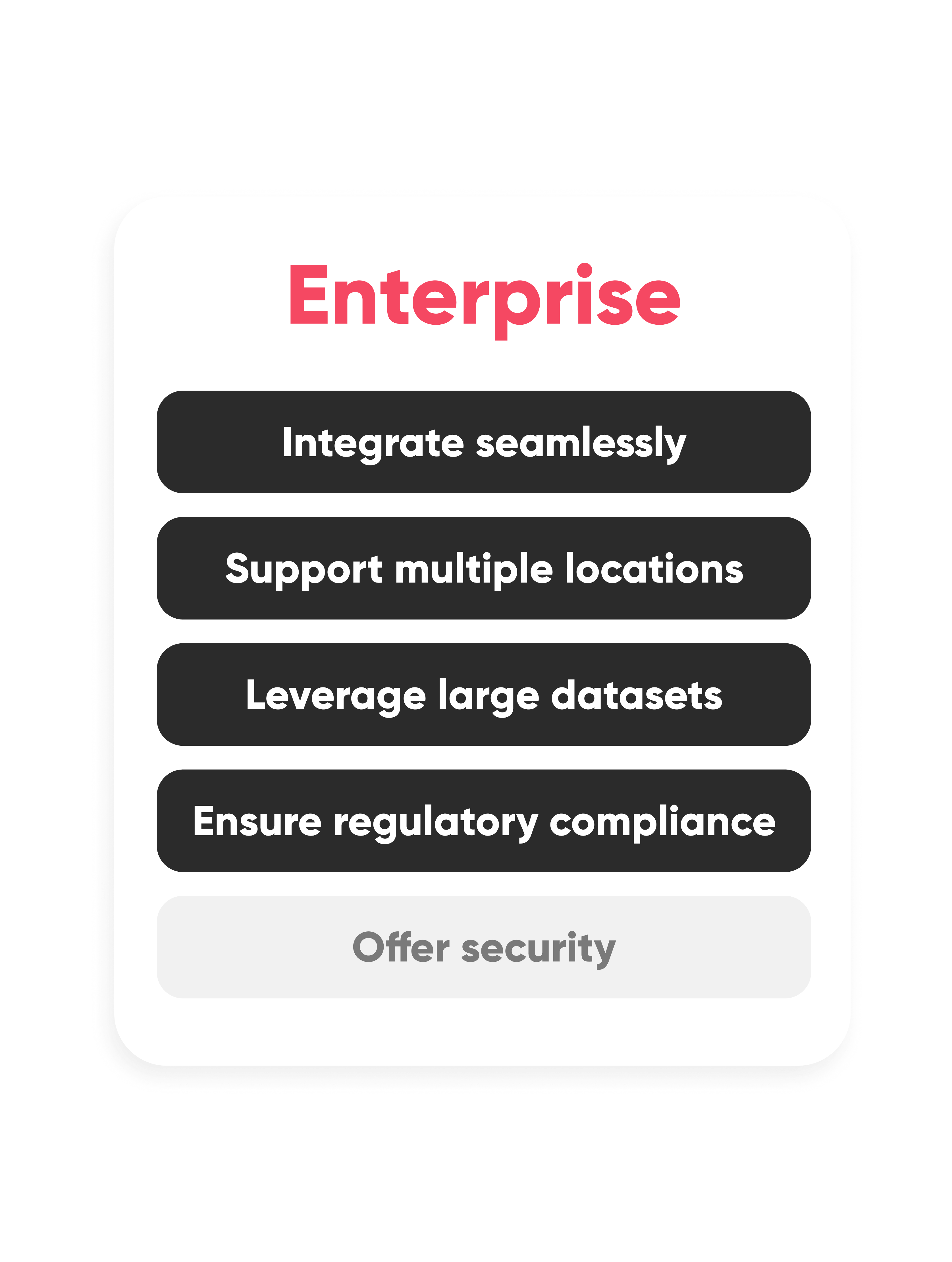
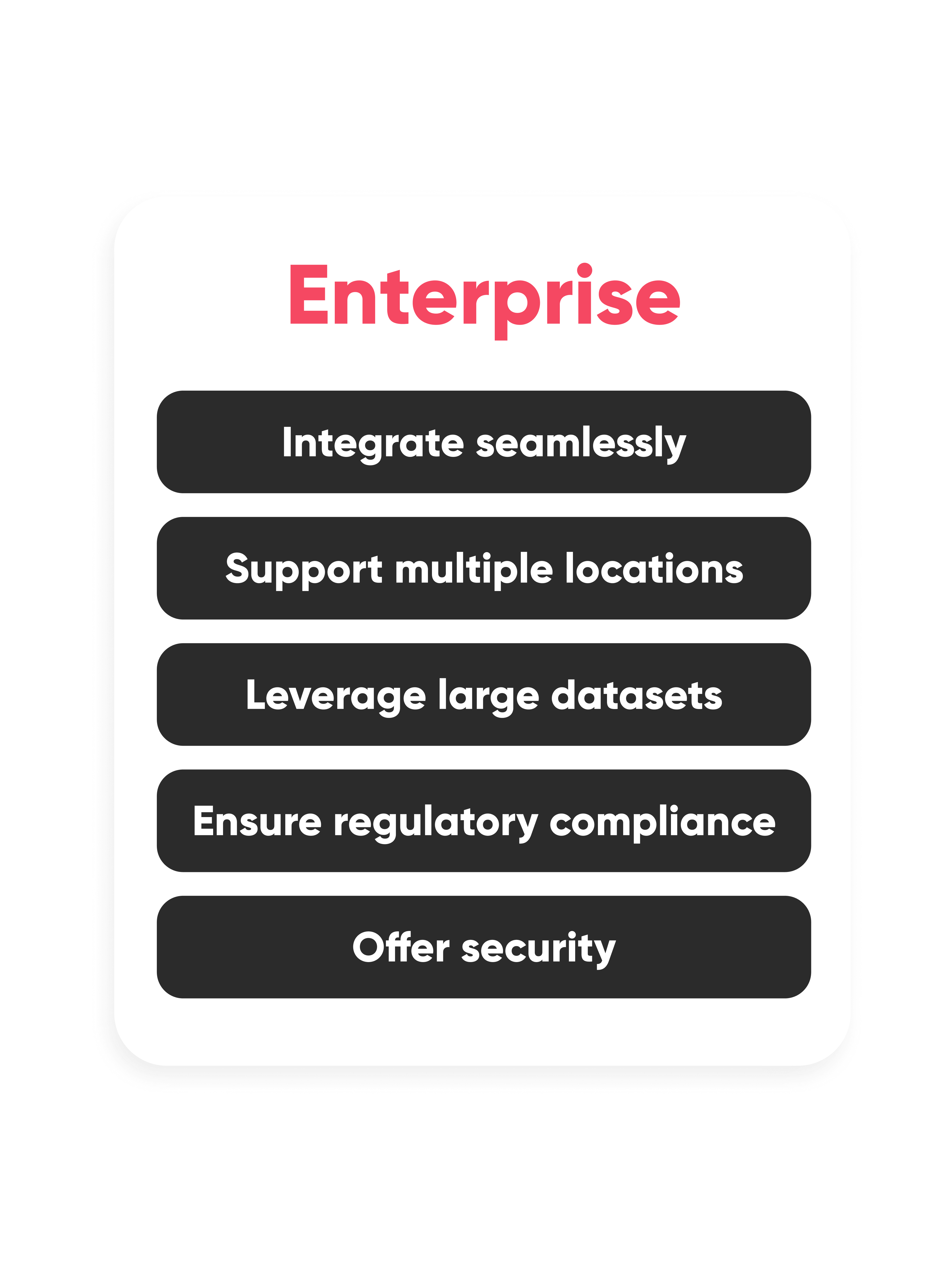
Intuitive

How a well-designed UI can make or break the store experience
The user interface (UI) of a POS system plays a crucial role in the overall in-store experience for customers.
If the system is difficult to use, slow to process, disconnected from other in-store systems, or requires jumping through unnecessary hoops, or an eyesore to look at, it can create friction in the customer experience.
According to a Salesforce study of 12,000 global consumers and 3,600 businesses, 80% of customers view "flawless engagement" as being just as important as product quality. Meaning, an efficiently-designed UI is essential for driving customer satisfaction and loyalty by building trust and encouraging repeat business.
An efficient, reliable, and well-designed POS user interface can foster a better customer experience, and has three main tenets that should be considered: Simplicity, configurability, and aesthetic.
Simplicity
When choosing a retail POS system, the user interface (UI) should be a top priority. If the store teams cannot figure out how to set it up or use it, nothing else will matter.
It takes 40 hours to learn a legacy POS system, which is more time than retailers can afford. The POS should be easy for employees to navigate without extensive training.
A simple, user-friendly UI with quick access to frequently used features and functions helps to support this role. Utilizing familiar systems, like Apple iOS, can make adoption smoother. By reducing the learning curve and increasing ease-of-use, retailers can save time, increase productivity, and enhance the overall customer experience.
Configurability
The question of what POS system is best is not a one-size-fits all answer.
Retailers need to choose a POS system that is able to quickly and efficiently adapt to change for any reason— while some changes can be forecasted and planned for, others, like the pandemic, come out of left field.
Customizable features allow for a more personalized and efficient customer experience that also supports the business through any number of industry, economic, and regulatory changes as well as the evolving behavior of their customers.
Some customizations to consider include:
- How do you organize and display the data that’s most relevant to your store teams?
- What do you want your workflow to look like for order processing or inventory management?
- What user permissions do you want to put in place?
Aesthetic
The design of a POS system can have a significant impact on the customer experience and help businesses stand out from competitors.
Apple iOS products, for example, are beautifully designed, and their sleek, modern looks adds a certain elegance to the interaction. Associates can browse and showcase products side-by-side with the customer, scrolling through different styles, colors, and patterns as easily as if they were shopping online. Additionally, offering both a stationary and an mPOS solution makes it much easier for associates to integrate into their day-to-day routine and assist customers both at the register and on the sales floor.
Having a beautiful design can create a positive impression, enhance the customer experience, and drive customer loyalty.
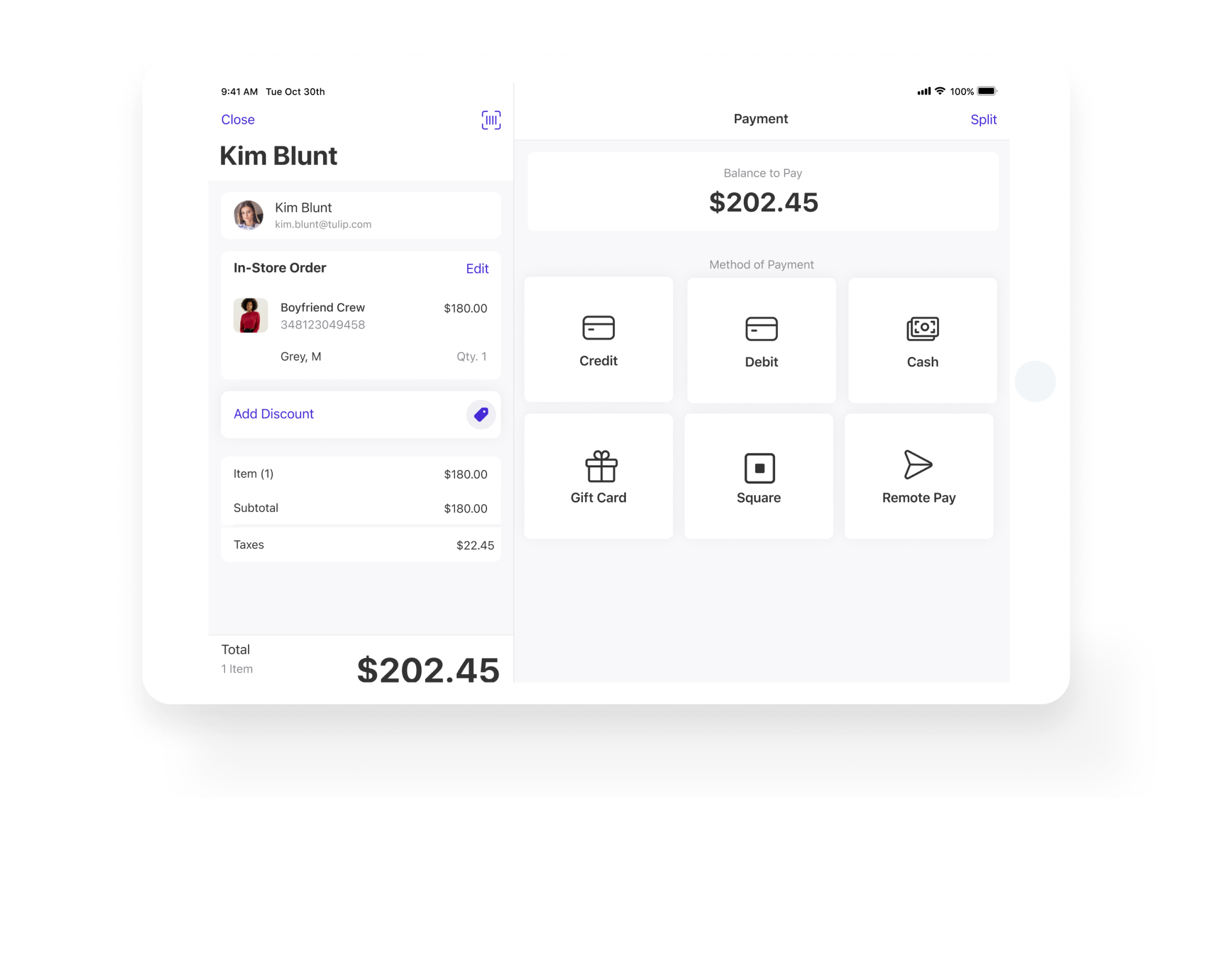
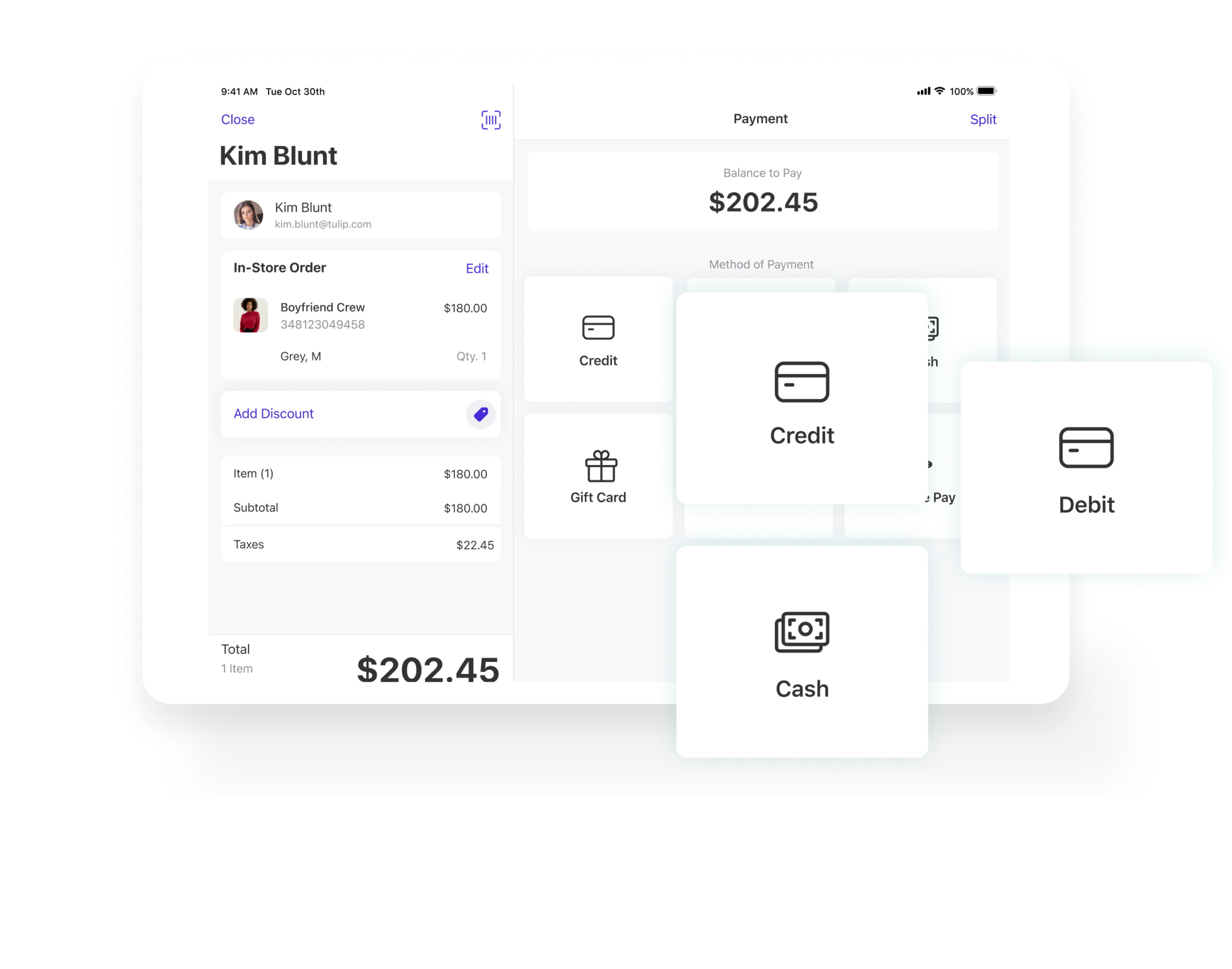
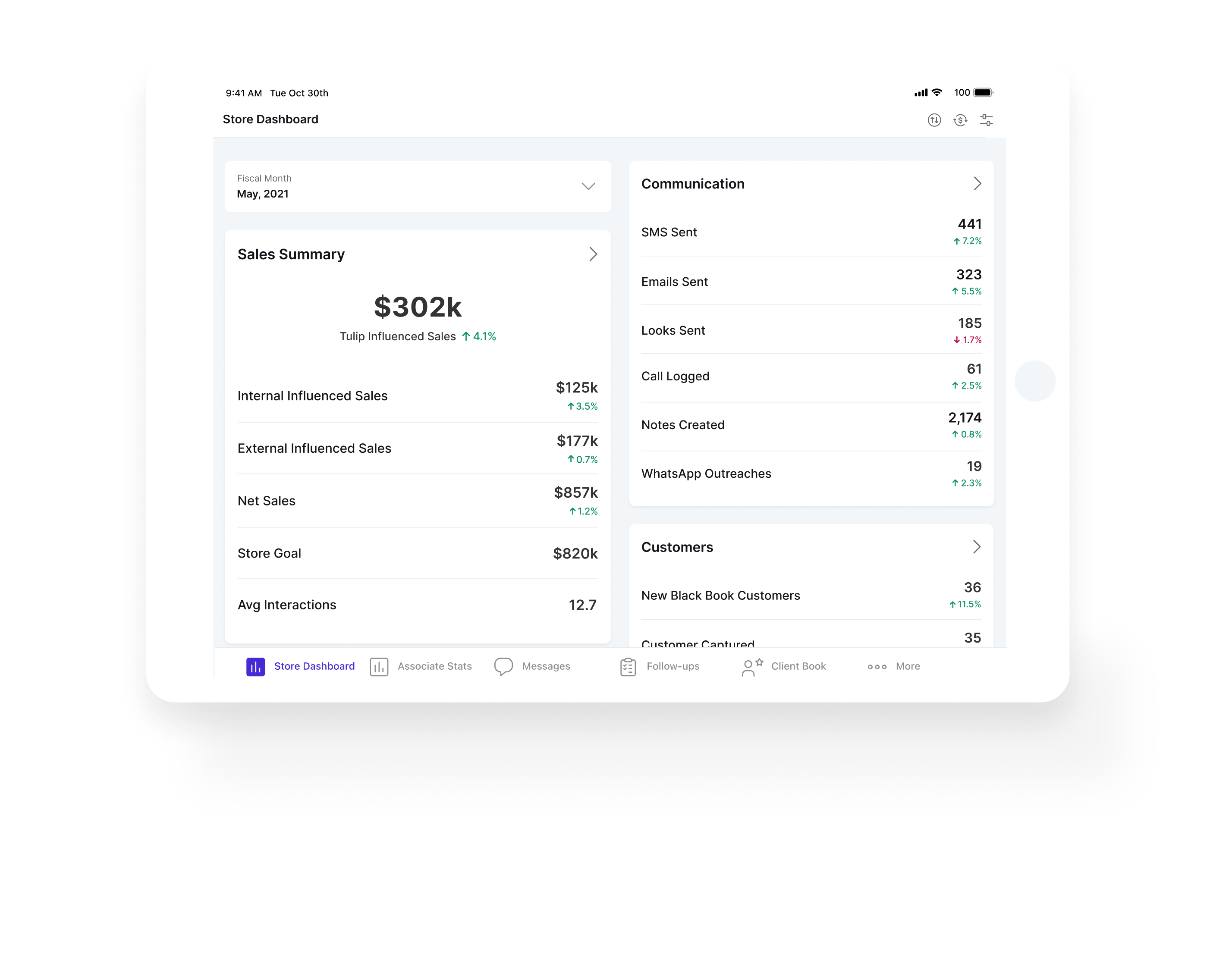
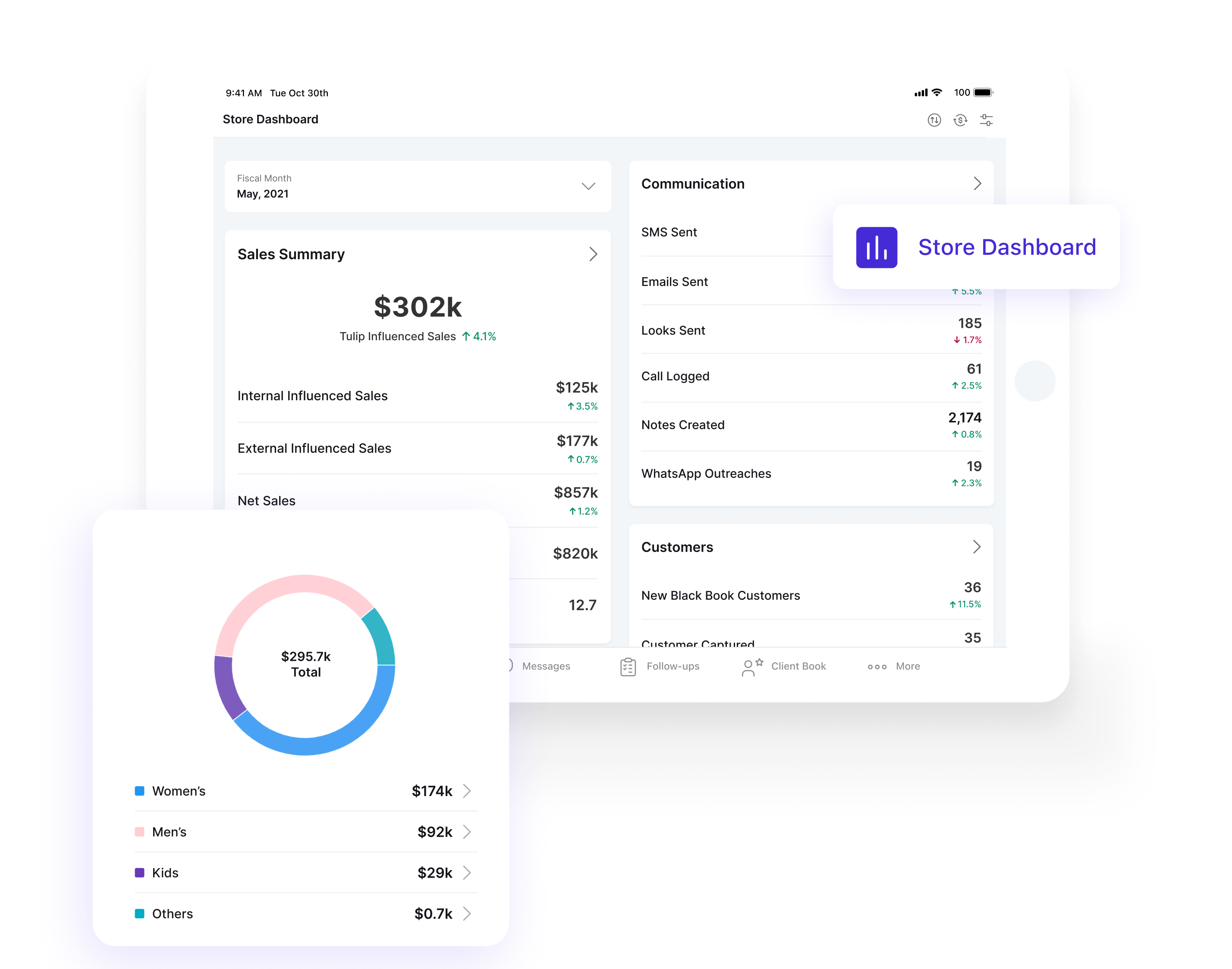

About
Tulip provides a suite of cloud-based solutions that let retailers overcome industry challenges and set a new standard for omnichannel commerce. Partnered with Apple and Salesforce, Tulip equips sophisticated retailers to build connections with customers, fulfill orders, checkout purchases, and optimize operations in order to create the end-to-end experience modern customers expect. Leading retailers like Mulberry, Saks Fifth Avenue, Kendra Scott, Kate Spade, COACH, and Michael Kors use Tulip to elevate the shopping experience, increase sales, and improve customer service across channels.
